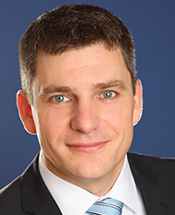Training is Paramount
The cable industry is at a turning point. Conceptualized as classic delivery platforms for analog video signals, broadband systems have been leveraged into flexible IP networks over the years to meet increasing customer demands. The primary paradigm during this transformation process has always been the desire to maintain as much of the existing infrastructure as possible. The idea behind this approach is simple: Existing infrastructure has been amortized.
Since the introduction of DOCSIS into cable networks in 1997, technical innovation in cable has been accelerating its pace. Currently we observe that innovation and completely different approaches to engineering solutions are being conceptualized at an ever increasing rate. This poses a blessing as well as a curse to network operators. The blessings are obvious: They put operators into a very competitive position in the market. The curse is the implementation process of these sometimes fundamentally different new technologies into the networks as well as the fact that something new is likely to be conceptualized just a few months into the future.
This places a certain stress on operators, on engineers and the affiliated industry worldwide. While innovations come around faster and faster, it is imperative that the workforce designing and operating holistic broadband networks understands how this technology functions in detail. Rapid roll-outs and an efficient scaling of new technologies have become paramount factors in the operation of broadband networks from a technological, financial and business point-of-view.
Cable is a pragmatic industry. As such it recognizes that a holistic approach to training is needed to enable the efficient and widespread adoption of new technology in broadband networks in short periods of time. During the development of DOCSIS 3.1, which has instant worldwide applicability, SCTE•ISBE have been working in close coordination with CableLabs as well as partners in different regions of the world to create training paradigms in conjunction with the specifications, resulting in the punctual availability of customized training for engineers and technicians working with DOCSIS 3.1 systems. This training finds high acceptance in the U.S. and international markets since it is training that puts engineers into a position to be working on DOCSIS 3.1 technology.
SCTE•ISBE’s partner in Europe is Adams Network Engineering, a Germany-based company designing, implementing and servicing broadband networks in the European market. As a shareholder of the German Institute for Broadband Communications, Adams provides market specific expertise in the largest cable telecom market in Europe.
Partnering with a company like Adams provides SCTE•ISBE with experts on the European market situation. Also, Germans have a strong engineering tradition and like their technology described and instructed in German. Adams has bi-lingual engineers capable of translating content such as the SCTE•ISBE’s DOCSIS 3.1 Boot Camp into German “cable-lingo” and instructing it in a “teutonic fashion.” Translations into other European languages are also possible, such as Polish or Dutch. A partnership like this enables SCTE•ISBE to connect to the local operators, open new opportunities and to respond to the increased development speed and implementation of technology by reducing the training’s time-to-market.
During the past 12 months, SCTE•ISBE have trained the engineering workforce of Unitymedia, the German Liberty-network with about 5 million customers through their German partners. This training was conducted in the form of seven DOCSIS 3.1 Boot Camps held in German language in conjunction with Unity’s DOCSIS 3.1 roll-out. These were highly accepted and put the engineers into a position to conduct the roll-out successfully and address the problems they encountered accordingly. Further, DOCSIS 3.1 Boot Camps have been conducted in other European countries and they continue to be very popular.
DOCSIS 3.1 is just the first step. The near future will see full duplex DOCSIS, DAA/FMA and FTTX roll-outs. The approach SCTE•ISBE took with DOCSIS 3.1 serves as a template for future joint activities in training, shaping SCTE•ISBE for tasks ahead. The cradle of engineering is the brain of the engineer. SCTE•ISBE supports the industry in placing the necessary technical knowledge into this cradle — worldwide, in a competent, efficient and interesting fashion.
 Dr. Alexander C. Adams,
Dr. Alexander C. Adams,
Managing Director and Chief Science Officer,
Adams Network Engineering
Alex was born in Wittmund, Germany in June 1971. He studied Electrical Engineering at the University of Hawaii in Honolulu, where he received his Bachelor and Master of Science degrees. He received his PhD from the Technical University Darmstadt, Germany. Alex has been active in the cable industry since 2001 as a project engineer and managing director of the companies Adams Consult and Adams Network Engineering in design, upgrade and service of HFC networks. He is SCTE•ISBE’s representative in Europe, Instructor and Subject Matter Expert on DOCSIS.
Shutterstock




